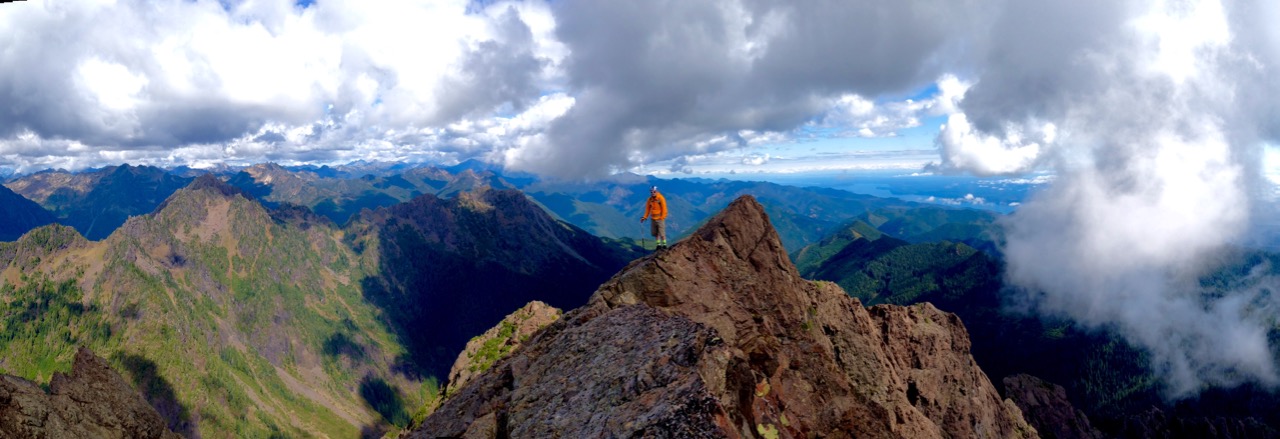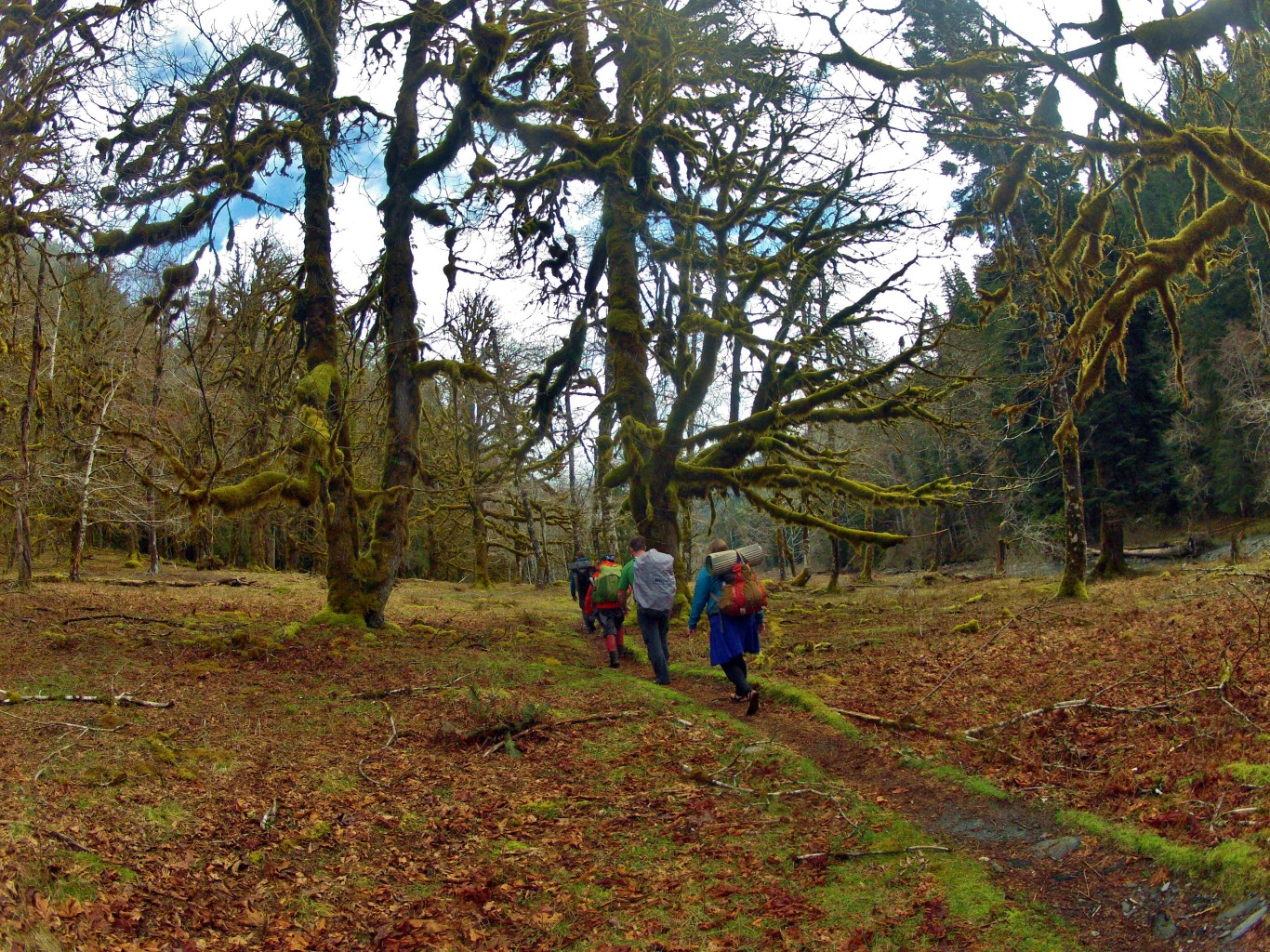For years ThurstonTalk has been sharing hiking destinations and adventures for you and your family to enjoy. From stunning destinations in the Olympics, to breathtaking views around Mount Rainier and everywhere in between, we have inspired and encouraged you to get outdoors and reconnect with nature.
 Now, since so many have asked, here are our tips to stay safe and be prepared while adventuring outdoors. We encourage you all to read this, follow it and share it with all hikers you know. That way our Search and Rescue friends will be able to focus on serious injuries high on the mountains, and our families will know we are being responsible and safe. There are more ways to stay safe on trails than listed below, but if you follow these tips, you should be able to have an enjoyable adventure in the wilderness. Remember that it is your responsibility to be safe and smart on the trails.
Now, since so many have asked, here are our tips to stay safe and be prepared while adventuring outdoors. We encourage you all to read this, follow it and share it with all hikers you know. That way our Search and Rescue friends will be able to focus on serious injuries high on the mountains, and our families will know we are being responsible and safe. There are more ways to stay safe on trails than listed below, but if you follow these tips, you should be able to have an enjoyable adventure in the wilderness. Remember that it is your responsibility to be safe and smart on the trails.
Bring the Essentials
For every trip into nature, you need to be prepared. Whether it is a one-mile hike with the family or a solo trip where you cover more than 20 miles in a day, being prepared is the difference between a great day and a really bad one. Groups like the Mountaineers will say to always bring the 10 essentials, and for long treks you should do this. However, for extremely short day hikes, lugging around the 10 essentials will feel like overkill. Instead, think through your trip, and be sure you have everything you need in case of an injury or if you were to get lost. No matter the distance, at the very least you should always have a first aid kit of some sort, extra food, extra water, a map of the region and the knowledge to read it. You also should bring extra clothes in case it rains, snows or gets very hot.
Know the Weather

Before heading out on a hike, you will need to check the weather in the region where you will be hiking. To best find the forecast you need, check a website like Weather Underground or, better yet, NOAA. Once you check the weather, make sure the conditions are something you want to hike in. Bad weather hiking is not just uncomfortable to many, it can also be slippery and more dangerous. Keep in mind that any weather forecast is not going to be completely accurate. Because of that, you need to repeat the first step and be prepared.
Dress Properly
Often accidents happen because people are not dressed for the trail they are hiking. There are numerous websites telling you the best clothes to hike in, and most of them are correct. Temperatures can fluctuate quickly in the Pacific Northwest, with the threat of rain almost always present. If it is not raining, chances are you will sweat, so fabrics that keep you cool and relatively dry are key. Comfortable shorts or pants designed for hiking are a necessity, as are shirts designed for physical activity. Remember to bring or wear layers and be prepared for changing weather. For footwear, what you wear depends on your hike. While many will say hiking boots are needed, many easy trails can be done in simple sneakers. When possible, avoid impractical footwear, as it will more easily lead to injury or long-term foot and ankle problems.
Study Your Trail

Before hiking on a trail, it is a great idea to read about your destination, including looking at a map of the region. Many favorite new hikes can be found in guidebooks written by local authors or other resources online. Make sure you read one or two reviews of the trail because some websites do not have accurate information. Free maps of almost every trail in the country can be found at CalTopo.com, which can be screenshot and stored on your phone or printed out at home. Play around with this tool before you go. Also, Apps like Topo Maps+ have great resources for showing trails and tracking your hike even without cell service.
Share Your Plans
Before any hike, long or short, always tell a few friends or family members where you are going. Give them a detailed itinerary including when you are leaving your home and the latest you expect to return home. Tell them to contact the authorities if you have not returned or contacted them by your stated completion time. Give the name of the trail you are hiking, what you are wearing and the color of the backpack you are using. As soon as you are back within cell service, let your support team know you are safe and headed home. Make sure your time frame gives you plenty of wiggle room since traffic issues may cause a delay. Whatever you do, do not deviate from your plan, or the entire support system becomes pointless.
Know Your Limits
Sometimes we start a hike that is just too hard or the weather shifts into a nasty day. There is no shame in turning back even if it is as simple as you just do not feel well. Pushing yourself too far is how many accidents happen, and there is no need to do it. If you are tired, take a break, rest for a bit, eat some food and see how you feel. If you still feel bad or unable to go farther, slowly return to your car. Trust your judgement on this and be smart. Do not let ego get in the way of reality.
Stay with Your Group

One of the easiest rules to break while hiking is to leave your hiking group. While some in your group may be slower or faster, you decided to hike together so keep it that way. Many injuries and accidents have occurred on trails when members of a hiking party become separated. The easiest way to ensure this does not happen is to stay together. That also means that if one of your hiking party is tired and cannot go on, do not leave them along the trail.
Take Breaks and Refuel
On any hike, be sure to take plenty of breaks. During these breaks, eat, drink plenty of water and allow your body and mind to recover. Take this time to snap a few pictures, chat with fellow hikers or enjoy the views of wilderness. Stay hydrated and fed, as dehydration and lack of nutrition can cause impaired judgement that can lead to injuries or mishaps.
Follow and Stay on the Trail
Finally, during every hike, follow the trail and stay on it. The trails around the Pacific Northwest are mostly well-maintained and easy to follow, but the undergrowth around the trails can quickly cause disorientation for those new to hiking. Because of this, we strongly recommend not venturing from the trails that will lead you safely to your destination. Leaving trails only increases the risk of getting lost or injured. Another important reason to stay on the trail is that if you are injured, you can be found more quickly, especially if you have left a detailed itinerary with a friend or family member.
For more tips and advice on how to stay safe, contact Douglas Scott, the author of this article.




















































